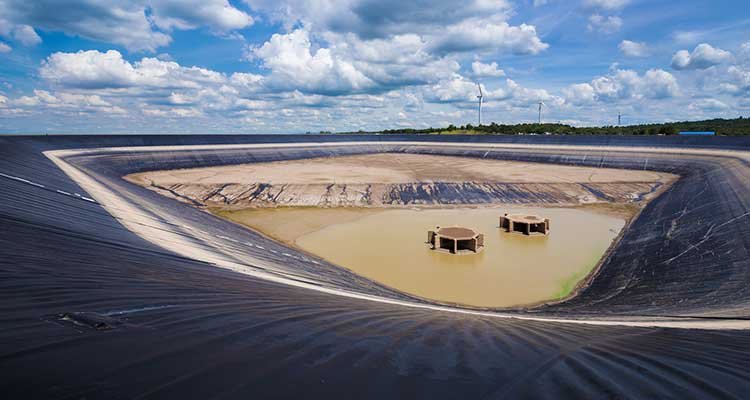We build reservoirs for a number of reasons. We use reservoirs for recreation, to control waterways, to generate electricity, or most commonly, to store drinking water. In the case of drinking water, reservoirs hold water until needed, then feed it through the water treatment process. As you can imagine, this means the number one goal of any reservoir building project is to maintain water purity as much as possible. And that's why you need floating covers. One of the ways reservoirs can become contaminated is from above. As an open body of water, it is susceptible to rainwater, fecal matter from birds and wildlife, leaves and other debris, and even dead animals. This can result in chemical issues, biological issues, or physical issues that can be a hazard to human health. All of these things can cause water quality to deteriorate and even become undrinkable. This happened in New York when the Indian Brook Reservoir became contaminated due to soil erosion and runoff from pesticides and fertilizers used in surrounding suburban areas. Though Federal, State, and County regulations deem the water safe, residents noticed a change in the chemical composition of their water supply. Which resulted from a reservoir that wasn't lined or covered properly. One of the ways to prevent this is by using floating covers for your reservoirs.
The Standardization of Floating Covers for Reservoirs
Floating covers are geomembrane tarps that cover the surface of your reservoir. They protect it from contaminants as well as algae growth and evaporation. In fact, the American Water Works Association (or AWWA) developed the standard D130 for using “Flexible Membrane Lining and Floating Cover Materials for Potable Water Storage.” The standard outlines the advantages of using geomembrane liners and covers to maintain water quality in reservoirs. Liners protect reservoirs from groundwater contamination and seepage while floating covers protect from airborne contamination, evaporation, algae growth, and reduction of chlorine demand. They are also the least expensive option among liners and covers and in the case of potable-grade covers, they maintain water potability no matter the conditions.
What You Need To Look For In Floating Covers
The problem is, many commercially available floating covers actually harm water more than they protect it. This is because they consist of low-grade polyvinyl chloride (PVC) which contains toxins such as dioxin and hydrogen chloride. Both of which are PVC products that can cause severe respiratory ailments, congenital disabilities. They even cause cancer when exposed to potable drinking water sources. Not to mention, they contain plasticizers and dispersants that leach harmful chemicals into drinking water. Especially when the material deteriorates. For this reason, it is important to look for high-quality, reinforced geomembrane material that is made from potable-grade material. We cannot stress enough how important this is when it comes to protecting our drinking water. BTL Liners makes floating covers that are NSF/ANSI 61 certified potable-grade. That means we third-party test our liners to ensure they are food and water safe.
BTL Makes Quality Potable-Grade Floating Covers
Not only that but we build our materials to last. We manufacture our high-strength RPE and RPP liners and covers in Prineville, Oregon using only the finest North American materials. Our covers can withstand temperatures as low as -85 degrees Fahrenheit, are tested for tensile strength and durability, and are warrantied for up to 25 years. That means you don’t have to worry about the longevity of your floating covers. And you can rest assured knowing that your reservoirs will remain pure and potable throughout the years. Contact us for more information about our floating covers for reservoirs.




